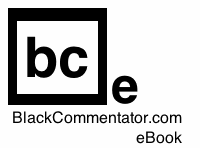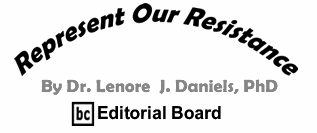
Out of Control:
A Fifteen Year Battle Against Control Unit Prisons



One of the chief symptoms of every
revolution is the sharp and sudden increase in the number of ordinary people
who take an active, independent and forceful interest in politics.
-Nikolai Lenin
You can never have a revolution in
order to establish democracy. You must have a democracy in order to have a
revolution.
-G.K. Chesterton
Attend a Forum to discuss our
assertion that Prisons are about RACISM
What are you doing about it?
What could you do about it?
-The Committee to End the Marion
Lockdown, Out of Control: A Fifteen-Year Battle Against Control Unit Prisons
In
the years between 1965 and 1968, Dr. Martin Luther King Jr. began “challenging
the nation’s fundamental priorities,” writes Jeff Cohen and Norman Solomon in
“The Martin Luther King You Don’t See on TV” (FAIR: Fairness and Accuracy in
Reporting, January 4, 1995). He became “the country’s most prominent
opponent of the Vietnam War and a staunch critic of overall U.S. foreign
policy, which he deemed militaristic.”
Noting
that a majority of Americans below the poverty line were white, King developed
a class perspective. He decried the huge income gaps between rich and poor, and
called for ‘radical changes in the structure of our society’ to redistribute
wealth and power. ‘True compassion,’ Dr. King declared, ‘is more than flinging
a coin to a beggar; it comes to see that an edifice which produces beggars
needs restructuring.’
Dr.
King’s economic critique complained about “capitalists of the West investing
huge sums of money in Asia, Africa and South America, only to take the profits
out with no concern for the social betterment of the countries.” Here, at home,
Dr. King took up a “militant project” - the Poor People’s Campaign.
This
is the Dr. King we do not see or hear, write Cohen and Solomon. This is the Dr.
King the Washington Post declared had “diminished his usefulness to his
cause, his country, his people.” The Reader’s Digest “warned of an ‘insurrection’”
while Life Magazine called his “Beyond Vietnam Speech” “demagogic
slander that sounded like a script for Radio Hanoi.”
Martin
Luther King’s commitment went beyond voting rights.
***
For
correctly linking the U.S.’s militaristic (imperialist) ambitions with the
economic edifice of capitalism, King was targeted for elimination and his
legacy of radical thought and militancy omitted, replaced by the mythical:
equality for all - at last!
White
liberals went home to establish careers and families. Black liberals took up
the flag of the donkey and urged Blacks to join the Democratic Party. The
Left, along with the poor, King and Malcolm X, radical thought and
militancy were vilified, and crime became associated with Black
Americans and the desire for equality and democracy. It is not an accident,
writes Michelle Alexander that the civil rights movement is identified as “a
threat to law and order” at the same time the FBI is reporting “fairly dramatic
increases in the national crime rate” (The New Jim Crow: Mass Incarceration
in the Age of Colorblindness).
The liberal bourgeoisie, white and Black, awakening now from the Dream, appear to be recognizing a narrative to which they have contributed to sustain the omissions and gaps thereby forestalling the movement of the poor and working class. Now, more than 2 million, mostly Black, Brown and Red people, are behind bars, more, according to Michelle Alexander, than were enslaved. Prisons are everywhere and the pipeline from school to prison is very real for poor and working class children left behind in the testing-til-you-drop-out-and-drop-into-a-prison Public School System. Homeland Security and the CIA have their eyes on everyone, as everyone, including American citizens, could become a potential enemy of the State, a State that has declared itself at war with everyone!
The
fundamental restructuring of domestic and foreign policy, the kind of
fundamental change Dr. King advocated and pursued demands a commitment to
eradicating the omission of truth and the vilification of the poor and working
class, a commitment that does not contribute to sustaining any facet of the
violence that is the capitalist system. For it is capitalism that is the ultimate
enemy of humanity and of this Earth. Our war is to bring about a just
civilization for sustaining life not proliferating suffering, destruction, and
death.
I
know a few long-time, committed activists who have worked for years with and on
behalf of poor, working class and political prisoners and who have for years
struggled to educate the public with the truth about the link between
incarceration and the Empire’s wars against humanity. These individuals still
sacrifice their time, indeed, their lives to the vision of democracy and
freedom they share with King and Malcolm X. In that sense, the “omitted” legacy
of Dr. King and of Malcolm X and others still lives on.
Wherever
there is power, there is resistance.
-Michel
Foucault, The History of Sexuality, Vol. 1: An Introduction, Vol. 1, Introduction
The New Jim Crow: Mass Incarceration in the Age of Colorblindness
forced many Americans to understand (and for some to admit) that the
criminalization of populations was part of a systematic program to neutralize
resistance to a capitalist/imperialist coup that ultimately succeeded in
drawing executive, judicial, and legislative resources to the promotion of a
capitalist state of “law and order.” On the other hand, Out of Control: A
Fifteen Year Battle Against Control Unit Prisons, with a forward by
Sundiata Acoli, is a well-written, historical, first person account of ordinary
people, activists and prisoners, in the struggle to effect fundamental change in
which Dr. King would advocate and participate were he alive today.
Out
of Control, is one story of feet on the ground
and the efforts of prisoners themselves resisting their dehumanization. The
story that Out of Control tells of one organization’s (the Committee to
End the Marion Lockdown, CEML) efforts to resist, centers on the prisoners
first and foremost and their activist activities. It does not offer the
liberalization of struggle: no activist in or out of prison
expects to be honored at the next annual civil rights conference or invited to
the White House for beer and a chat with the president. Lockdown is permanent
and control unit prisons are nearly in every state. Although CEML “ceased to
exist” in 2000, together, these prison activists were, in fact, so effective
that they forced capitalist institutions, particularly the Bureau of Prisons,
to reveal themselves as the true monsters of nightmares - not activists who
remember the legacy of Dr. King’s activism.
Out
of Control is a documentation of the struggle, in
other words, a narrative of resistance against the institutionalization of
capitalist/corporate power that in itself challenges the irrational State
documentations justifying the necessity for methods of controlling human beings
as if repressive uses of technology and brute force are symbols of progress. Out
of Control attests to the contrary! It could be read as an invaluable
lesson to generations taught to believe that ever since the day a bullet landed
Martin Luther King on the floor of the balcony at the Lorraine Hotel we all
have been freed from deception and corruption. Skip along with the narrative
of the Dream - we have a Black president! Proof of freedom and democracy for
all!
We
are not free and our work is not yet done.
I
can think of a few former students who could have greatly benefited from a
thorough discussion of prison activism that links the repressive apparatus of
incarceration and torture to the pursuit of capitalist goals. But we have the
young, committed activists, including those participating directly and
indirectly with the Occupy Wall Street Movement. Nothing ever happens once,
Faulkner once wrote...
***
King,
on that Easter Sunday, defied his father and fellow pastors. He had to step up.
More sacrifice. More protest. He canceled his appearance at Ebeneezer, put the
robe away and donned a shirt and jeans to join the people in protest.
I
cannot end this review of Out of Control without mentioning again that
we are talking about ordinary people. Not people with, as they say, plenty of
“time on their hands.” Both Nancy Kurshan and her life-long partner, Steve
Whitman, held “professional” jobs. Kurshan recalls the challenges the couple
faced doing “political work” and supporting it financially while raising two
children - “oh yes - go to work each day.”
“It
pissed me off when people would yell ‘get a job’ as we demonstrated, since we
voluntarily took up this second job without financial recompense.”
In
1983, when the government established the first control unit prison in the U.S.
at Marion in Illinois, Kurshan remembers that a few friends in Chicago
“realized that this was a disaster that could thwart efforts to pursue justice
and freedom.” These control units, as Kurshan explains, are 8�10 foot cells in
which a human being is contained for 23 hours a day, “seven days a
week.” They are not permitted contact with other humans - (except, the guards).
“There was no way to know when it would end. Days, months, years would go by.
There was total idleness, no work, no education.”
“Intense
sensory deprivation and indefinite confinement was a way of life.”
Sometimes,
Kurshan continues, prisoners “pondered if they would go crazy. Some did.”
The
incident that brought these outside activists and the prison activists together
in 1985 was not so extraordinary either. After “two guards were killed by two
prisoners,” the prison at Marion was placed under lockdown. An isolated
incident left 350 prisoners vulnerable to the brutality of institutionalized
capitalist power.
From
1983 to 1985, according to Kurshan, all work and educational programs, and
religious services (Out of Control) were shut down - replaced by violence:
During
the initial stage of this lockdown, 60 guards equipped with riot gear, much of
it shipped in from other prisons, systematically beat approximately 100
handcuffed and defenseless prisoners. Guards also subjected some prisoners to forced
finger probes of the rectum. Random beatings and rectal probes continued through
the two-year lockdown. Despite clear evidence of physical and psychological
brutality at the hands of the guards, Congress and the courts refused to
intervene to stop the lockdown.
Today,
the world has a picture of this image of violence: the pictures of U.S.
soldiers proudly posing as the powerful beside the humiliated and tortured
prisoners from Abu Ghraib and Gitmo. Today, as Kurshan writes, we can see “a
direct line” extending from the U.S. control units to “these so-called ‘enhanced
interrogation’ centers throughout the world.” As Kurshan points out,
[s]o-called
‘brainwashing’ strategies that involved physical as well as psychological abuse
were being adopted from international arenas and applied inside U.S. prisons. Now,
in 2011, similar strategies, honed in Marion and its progeny, are being
employed around the world in the ‘war against terrorism.’
But
then, some of us have images of “Indian” hunters, slaveholder and whips,
infamous sheriffs and their dogs, the bullet in Crazy Horse’s back and the
bullets that riddled through the home where Fred Hampton slept. How did the
U.S. take control of the Philippines and Cuba?
In
1985, a C-4 bomb landed on the Philadelphia the home of MOVE activists, killing
11 unarmed people - and five of these threatening people were children.
Today,
the U.S. is a notoriously cruel nation: it holds “more prisoners in solitary confinement
than any other democratic (sic) country in the world.”
Kurshan quotes activist, Fay Dowker, who was a citizen of the United Kingdom: “on the British news when there is a story about U.S. Politics, they always show the White House as a symbol of U.S. power. Fay suggested it would be more appropriate to show a picture of Marion because it is the ‘real dark heart of the U.S. Where the government incarcerates those it feels most threatened by.’”
Was
it easy for Kurshan and Whitman to envision a situation in which the lockdown
at Marion becomes the normal state of business for the operation of prisons
throughout the U.S. “It seemed imperative to do something before the lockdown
became set in stone. We were terrified that if Marion became an accepted model
that proliferation would inevitably follow.” Kurshan, Whitman, and those
enlightened to see “saw” the “first-time-ever repressive apparatus” for what it
would produce: an “incipient evil.”
Kurshan
and others began their work by contacting existing organizations, including
Freedom Now! and Jericho, grassroots presses - anyone working on behalf of
prisoners, and by organizing conferences, a handful of people ultimately formed
a coalition of prisoners, former prisoners and activists. This was no small feat
then or now! “Prisoner” Bill Dunne, for example, had been editing a newsletter
called The Marionnette, “despite the
repression and the efforts of the authorities to destroy it.”
The
Bureau of Prisons’ response to prisoners who had had enough and to the
activists who joined them in protest is to step up its use of violence.
Recalling a conference in which the head of the BOP, Michael Quinn, appeared in
Chicago, in 1988, Kurshan writes that “Quinn and his colleagues slunk out the
door, and the workshop was terminated” when she and other activists tried to
confront the BOP’s one-sided description of the criminal.
It
was apparent to most of us present that the response of the BOP was
characteristic of that institution and the people who run it. In the face of
the mildest opposition, they responded immediately with no allowance of
dissent, no pretense of dialogue. To them, we were the enemy.
Out
of Control recalls the conferences and
demonstrations, including the valuable historical and educational
documentations arguing that “prisons are a tool of social control and that the
problems are societal, not individual.”
In
1986, “in a continuing effort to connect the issue of racism to our work at
Marion, Kurshan and fellow activist presented a film on the life of Malcolm X.
It was May19th, Malcolm’s birthday.
By
now we were no longer fooling ourselves into believing we were a temporary, ad hoc group. In fact, we made a
conscious decision to continue and were developing a rhythm to our work, alternating
between educational events and demonstrations and actions. We called ourselves
The Committee to End the Marion Lockdown (CEML).
Out
of Control clearly describes and illustrates that
following in the footsteps of Dr. King and Malcolm requires a stead-fast
commitment to fundamental change. “I believe it’s important,” Kurshan writes,
“to explain the labor-intensive nature of serious political work.” And Out
of Control does just that!
CEML
lasted fifteen years, and its core members, some 8-12 activists, organized
educational workshops and presentations, (often featuring former prisoners such
as “Jaime Delgado, a Puerto Rican independentista,” Safiya
Bukhari-Alston, the late former Black Panther activist, Akil Al-Jundi, of the
Attica Brothers). Members of the American Indian Movement (AIM), and others,
worked to distribute the “Dear Friends” newsletter and press releases, and yes,
organize and engage in demonstrations and protest. Out of Control
includes pictures, posters, pamphlets, including “Resistance Won’t Stop,” press
releases, samples of handouts, poetry, and newsletters.
As
Kurshan recalls, she, Sundiata Acoli, Steve Whitman and others worked on “a
piece about the Black struggle behind prison walls.” Kurshan wrote a chapter on
“women and imprisonment” for the project they called Out of Control. Kurshan
and Acoli sent a proposal to South End Press and the editors “agreed to publish
it and assigned” the project to an editor. Everything was fine until the editor
left South End. A “new editor wanted more control over the content of our book.
Her political views differed significantly from ours, and so the project never
came to fruition.”
This
version of Out of Control, including the documentations of CEML’s
struggle, is available online as an e-version. Kurshan: “[w]e realized that we
should produce a hard copy version of the main narrative (a book, if you will)
that could be distributed to people without web access, notably prisoners, but
others as well. The e-version can be accessed through the Freedom Archives website.”
There
is so much history in Out of Control. There are people and events some
of us remember. There are activists who sacrificed everything to remain on the
right side of history. Some are still with us and others have passed on. Nonetheless,
here in Out of Control is their story - and for this - the narrative and
supplemental documentation cannot and does not record a failure!
We
are appreciative to Kurshan and former members of CEML for making this
narrative and a history of resistance available to new generation of activists.
Out of Control proclaims that human beings are not expendable and the
prisoners’ narratives are not subversive, but represent a crucial reminder of
the potential for peoples’ power to effect fundamental change. We thank those
friends who said - write a book!






